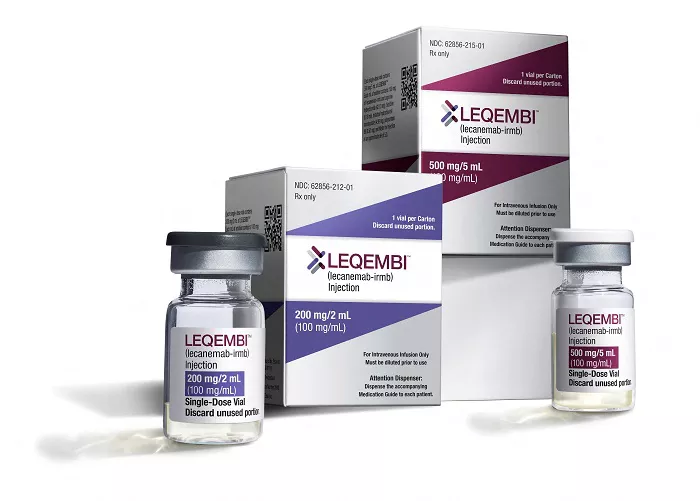Dealing with an allergic reaction rash can be both uncomfortable and distressing, prompting the need for effective and timely intervention. In this comprehensive guide, we will explore the various aspects of allergic reaction rashes, from common triggers to specific symptoms, and delve into the diverse strategies for treating them. Whether caused by contact with allergens, insect bites, or certain medications, understanding how to treat an allergic reaction rash empowers individuals to manage these skin irritations with confidence and achieve optimal relief.
Identifying the Culprit
Before delving into treatment strategies, it’s crucial to identify the culprit behind the allergic reaction rash. Allergens vary widely and can include substances such as certain foods, plants, medications, metals, or insect bites. Understanding the specific trigger is the first step in effective management. If the cause is unclear, individuals may consider seeking medical advice or undergoing allergy testing to pinpoint the allergen responsible for the rash.
Common Symptoms of Allergic Reaction Rashes
Allergic reaction rashes manifest in a variety of ways, each presenting distinct symptoms that contribute to the overall discomfort experienced by individuals. Common symptoms include redness, itching, swelling, and the development of hives or welts on the skin. In severe cases, anaphylaxis may occur, characterized by difficulty breathing, swelling of the face and throat, and a drop in blood pressure. Recognizing the symptoms is crucial for determining the appropriate course of treatment and seeking timely medical assistance if needed.
Immediate Actions
When faced with an allergic reaction rash, immediate actions can help alleviate symptoms and prevent the rash from worsening. The following steps can be taken:
Identify and Remove the Allergen: If the allergen is known, remove or avoid further contact with it. This step is essential to prevent ongoing exposure and worsening of the rash.
Cleanse the Affected Area: Gently cleanse the rash with mild soap and water. Avoid harsh or scented soaps, as they may exacerbate irritation.
Apply a Cold Compress: A cold compress or ice pack can help reduce inflammation and soothe itching. Ensure that the cold compress is wrapped in a thin cloth to prevent direct contact with the skin.
Take Antihistamines: Over-the-counter antihistamines, such as diphenhydramine or cetirizine, can help alleviate itching and reduce allergic reactions. Follow the recommended dosage instructions.
Use Topical Steroids: For localized rashes, over-the-counter or prescription-strength topical steroids may be recommended to reduce inflammation and itching. Consult with a healthcare professional before using potent steroids, especially on sensitive areas of the skin.
Avoid Scratching: While it may be tempting, scratching the rash can worsen symptoms and potentially lead to infection. Use gentle patting or tapping motions to alleviate itching instead.
When to Seek Medical Attention
While many allergic reaction rashes can be managed at home, certain warning signs and severity indicators warrant prompt medical attention. Individuals should seek medical help if they experience:
Difficulty breathing or swallowing
Swelling of the face, lips, or tongue
Widespread rash or hives covering a large area of the body
Signs of infection, such as increased redness, warmth, or discharge from the rash
Symptoms of anaphylaxis, including a rapid drop in blood pressure, fainting, or confusion
In these cases, immediate medical intervention is crucial to address potentially life-threatening complications.
Treatment for Specific Types of Allergic Reaction Rashes
The approach to treating an allergic reaction rash can vary depending on the specific type of rash and its underlying cause. Here are tailored treatment strategies for common types of allergic reaction rashes:
Contact Dermatitis:
Identify and avoid the substance causing the contact dermatitis.
Wash the affected area with mild soap and water.
Apply a cold compress to reduce inflammation.
Use over-the-counter hydrocortisone cream for localized itching and redness.
Take oral antihistamines to alleviate systemic symptoms.
Insect Bite Allergies:
Remove the stinger or insect parts if applicable.
Clean the bite area with mild soap and water.
Apply a cold compress to reduce swelling.
Use antihistamine creams or oral antihistamines to alleviate itching.
Keep the affected area elevated to reduce swelling.
Drug Allergy Rashes:
Discontinue the use of the suspected medication.
Seek immediate medical attention if the reaction is severe.
Take antihistamines to alleviate itching and reduce the rash.
Use topical steroids for localized skin reactions.
Inform healthcare providers about the drug allergy for future reference.
Food Allergy Rashes:
Identify and avoid the specific food allergen.
-
- Take antihistamines to manage itching and rash symptoms.
- Seek medical attention if there are signs of anaphylaxis.
- Carry an epinephrine auto-injector if the food allergy is severe.
Long-Term Management and Prevention Strategies
In addition to immediate treatment, long-term management and prevention strategies play a crucial role in minimizing the recurrence of allergic reaction rashes. Consider the following approaches:
Allergen Avoidance: Take proactive measures to identify and avoid known allergens. This may involve reading ingredient labels, using hypoallergenic products, and implementing lifestyle changes to reduce exposure.
Regular Moisturization: Keeping the skin well-hydrated with hypoallergenic moisturizers can help prevent dryness and reduce the risk of skin irritation.
Allergy Testing: Consider undergoing allergy testing, such as skin tests or blood tests, to identify specific allergens and develop a targeted management plan.
Education and Preparedness: Individuals with known allergies should educate themselves about potential triggers and be prepared with necessary medications, such as antihistamines or epinephrine auto-injectors, in case of accidental exposure.
Consultation with Healthcare Professionals: Regular consultations with healthcare professionals, including allergists and dermatologists, can provide ongoing guidance for managing allergies and preventing rash occurrences.
Conclusion
In conclusion, understanding how to treat an allergic reaction rash is a valuable skill that empowers individuals to navigate skin irritations with confidence and efficacy. From immediate actions to long-term management strategies, the comprehensive approach to treating allergic reaction rashes involves identifying triggers, seeking prompt medical attention when needed, and implementing preventive measures for ongoing well-being. By fostering awareness and employing targeted interventions, individuals can successfully manage allergic reaction rashes, promoting skin health and overall quality of life.
[inline_related_posts title=”You Might Be Interested In” title_align=”left” style=”list” number=”6″ align=”none” ids=”3414,3268,3265″ by=”categories” orderby=”rand” order=”DESC” hide_thumb=”no” thumb_right=”no” views=”no” date=”yes” grid_columns=”2″ post_type=”” tax=””]

































